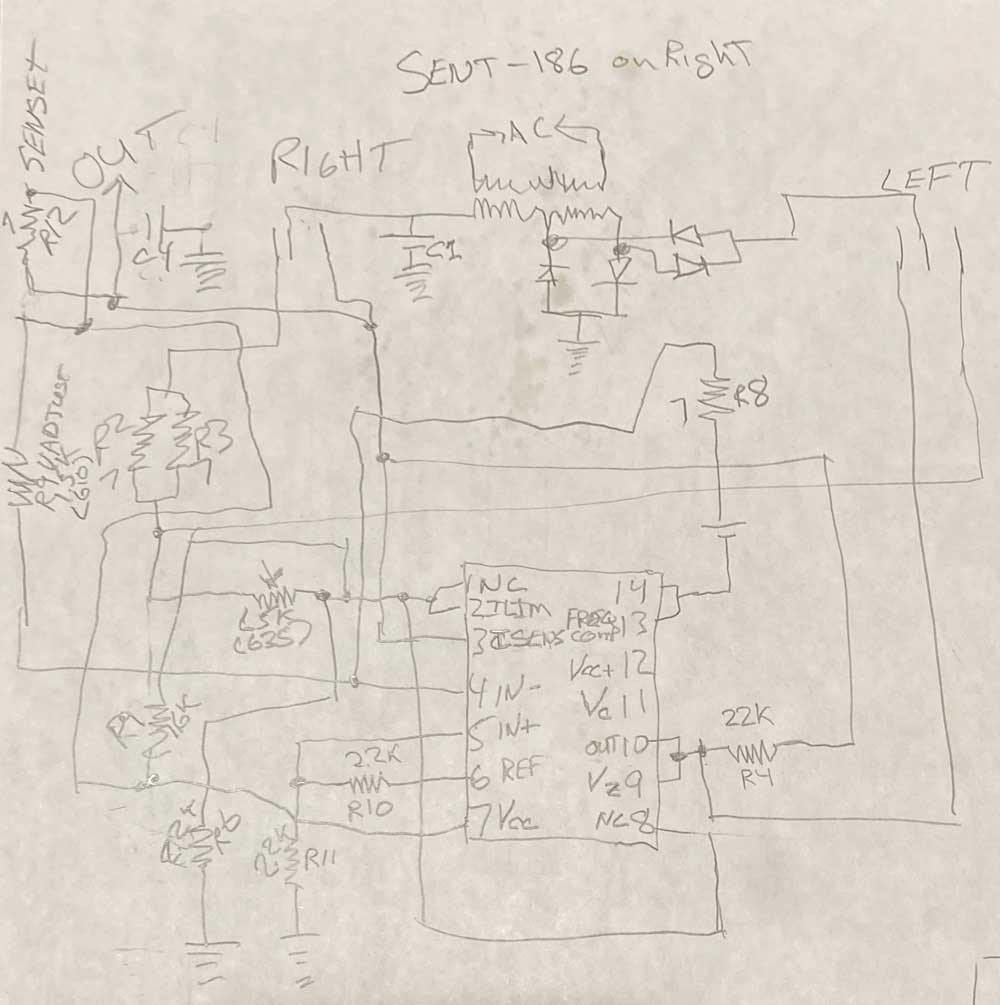I had a bit of trouble debugging the 5 volt side of this power supply. First symptoms I noticed was an inability to regulate under load. As the load increased the output voltage dropped significantly to the point where the computer would not work. In my mind, this probably meant that the regulator portion wasn’t working.
These sort of Power-One linear supplies use a uA723 regulator to do the job. You feed reference voltage and output voltage (usually divided by a resistor network) into the regulator and the output of this chip controls one or more power transistors to supply the desired voltage. You can find more about these supplies on this nice Power-One hacker page.
Though the Power-One linear supplies are all similar in design, they differ in details. I made a schematic of this particular power supply so that I could properly debug it.

After much probing, I could find no issues with the regulator circuit or the regulator chip. This really confused me, as the power supply regulation wasn’t operating correctly. After some hard thinking, I wondered if the problem might actually be with my measurement. Since my oscilloscope was broken, I switched my DMM to AC mode and as soon as a load was applied, I detected a several volts of ripple. Using a DMM to check ripple by putting it into AC mode is a trick that I learned somewhere along the line and has come in handy a number of times.
Realizing that most likely the smoothing capacitor, wasn’t smoothing, I jumpered in a fairly large capacity smoothing capacitor that I had in my stash. Sure enough, the ripple disappeared and the power supply output remained stable under different loads, just like it was supposed to.
I ordered an appropriate replacement and a spare. I replaced the smoothing capacitor and the power supply worked flawlessly for the remainder of this original SCELBI-8B’s checkout.
This isn’t the quite the end of the story. After I returned the system to the owner, the power supply failed again. Since symptoms were the same as before, I thought that perhaps the replacement capacitor failed during shipping, I sent a second capacitor to the owner, who wired it in parallel to the replacement cap, which solved the issue (again). Whenever I order parts, I almost always order spares, as shipping is often more expensive than the parts themselves. Having a spare on hand certainly was helpful this time around.
I’m not sure what happened during shipping of this system. Generally, I’m pretty reluctant to repair old computers, because of the high risk of new issues appearing during return shipping. I only took on this job because of the rarity of a SCELBI-8B and the chance I would have to further document an example.
